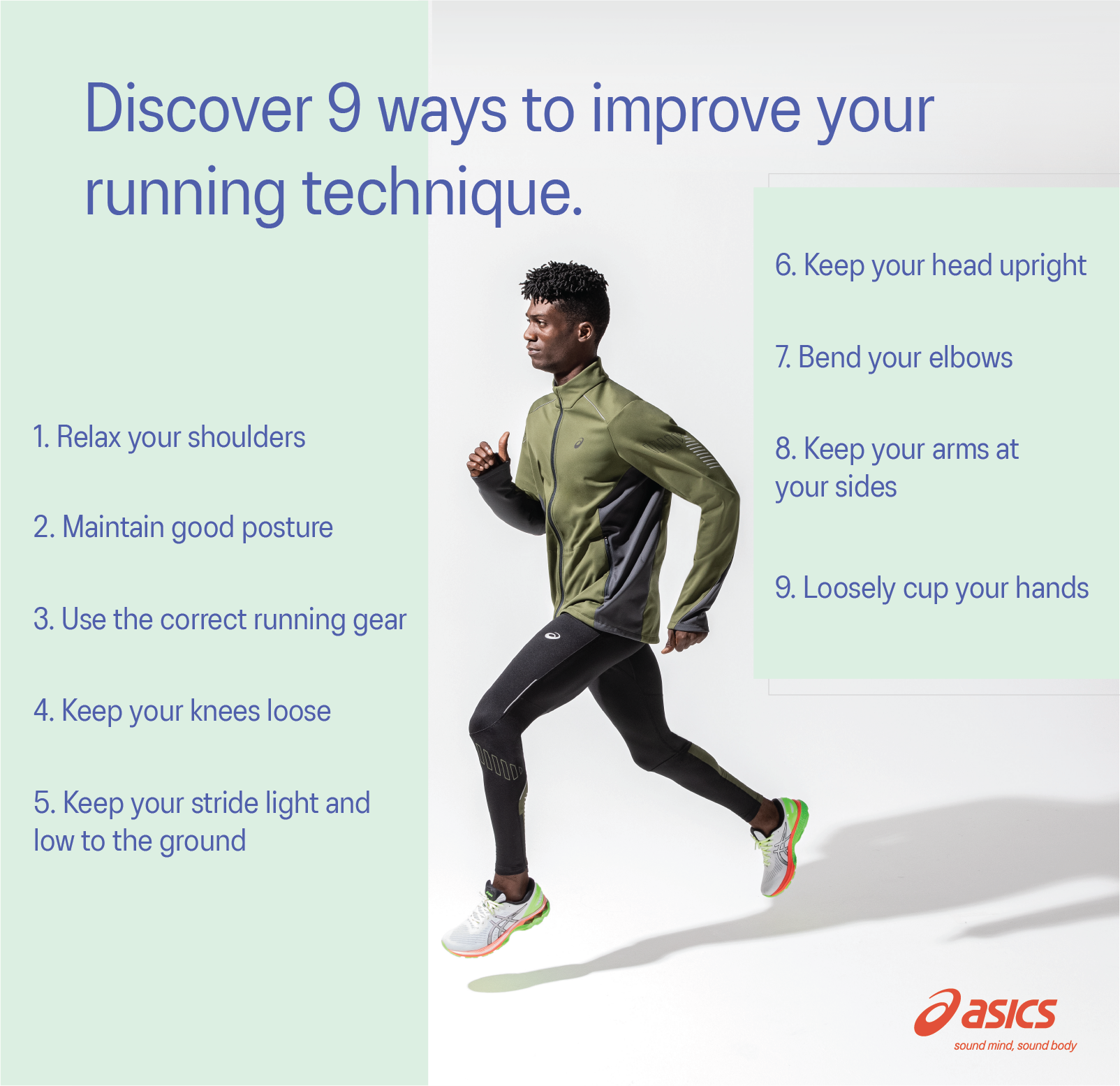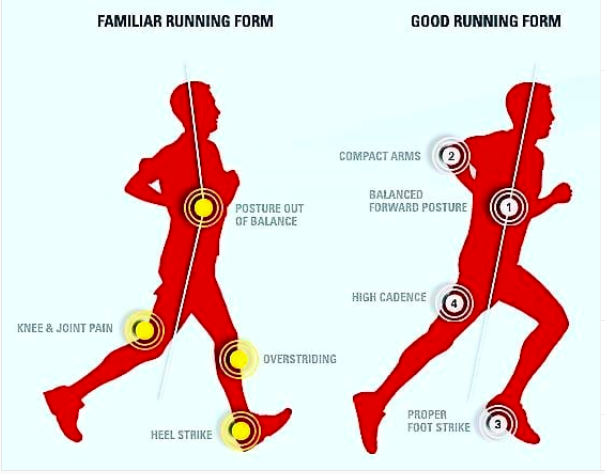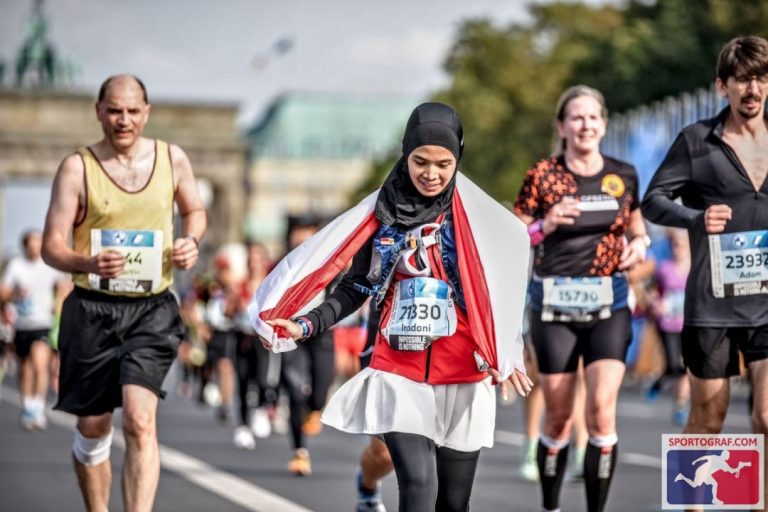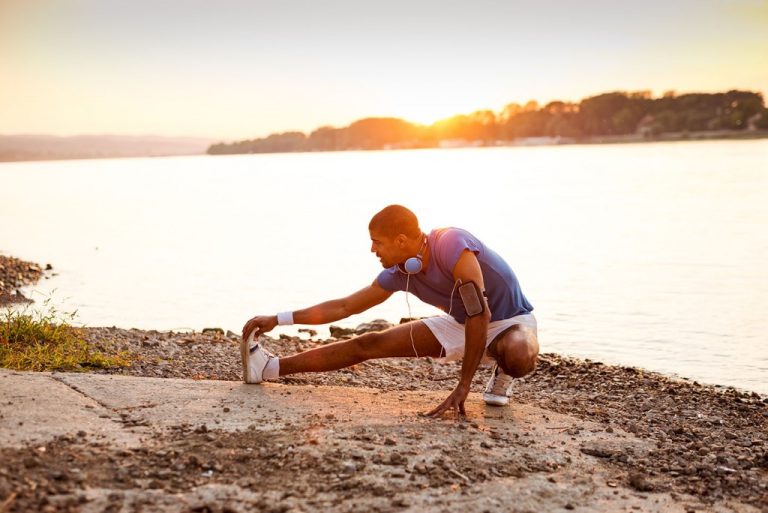How to Run Correctly?
To run correctly, focus on proper posture and form. Keep your chest lifted, shoulders relaxed, and arms bent at 90 degrees while engaging your core muscles.
Running is one of the most popular forms of exercise, and for good reason. Not only does it improve cardiovascular health, but it can also boost mental well-being. However, running with improper form can lead to injuries or discomfort. To run correctly, it is crucial to focus on maintaining proper posture and form.
This includes keeping your chest lifted, shoulders relaxed, and arms bent at a 90-degree angle while engaging your core muscles. In addition, it is important to wear supportive and comfortable shoes and to gradually increase the intensity and duration of your runs to prevent overexertion. We will dive deeper into the fundamentals of running correctly to help you get the most out of this beneficial activity.

Credit: www.asics.com
Importance Of Proper Running Form
Running is a great way to boost your overall fitness. However, if you’re not running with the proper form, you may be putting yourself at risk for injuries or not getting the maximum benefit from your workout. As such, it’s vital to know the importance of proper running form.
Why Form Is Crucial
- Proper running form enables you to run faster and longer while using less energy.
- It also reduces the risk of injury and strain on your joints and muscles.
- Good running form helps you maintain an efficient stride, which prevents overstriding and reduces ground contact time.
Benefits Of Proper Form
There are numerous benefits to maintaining good running form:
| Benefits | Explanation |
|---|---|
| Improved Efficiency | Good form helps you to conserve energy and avoid wasting it on unnecessary movements. |
| Reduced Risk of Injury | Proper form reduces the risk of injury by distributing the impact of the body’s weight evenly over the muscles and joints. |
| Less Fatigue | By running with the correct form, you’ll use less energy, and be less fatigued throughout your run. |
| Better Performance | When you have good form, you’ll be able to run faster and farther, which ultimately leads to improved performance. |
| Greater Enjoyment | You’ll enjoy running more when you’re not dealing with nagging injuries or excessive fatigue, leading to an overall enhanced experience. |
In conclusion, it’s essential to focus on correct running form while you’re out on your run. Always keep in mind the benefits of proper form and why it is crucial. By taking the time to learn and perfect good running form, you’ll be able to realize all the benefits of running while avoiding the associated risks of improper form.
Finding The Right Footwear
Running is an excellent way to stay healthy and fit. It is a great way to burn calories, improve cardiovascular health, and reduce stress. However, running can also cause a lot of injuries, especially if you are not wearing the right footwear. The right pair of shoes can make all the difference when it comes to comfort, performance and avoiding injuries. This guide highlights the factors to consider when choosing the right running shoes.
Choosing The Right Shoes:
Choosing the right running shoe can make the difference between a comfortable, fulfilling run and a painful, frustrating one. Here’s what to consider when choosing the right running shoes:
Importance Of Proper Fit:
The key to finding the right running shoes is ensuring proper fit. Wearing improperly sized footwear can lead to blisters, sores, and foot pain. A good fit means a snug, comfortable fit that allows your toes to move freely and with enough space to wiggle. Consider shoes with breathable mesh uppers, which help prevent your feet from getting too hot and sweaty.
When selecting running shoes, consider the following fit factors:
- Length of the shoe: The shoe should have at least a half-inch of space between the end of the longest toe and the end of the shoe.
- Width of the shoe: Make sure the shoe is the right width for your foot, so it won’t squeeze or be too loose.
- Arch support: The shoe should support the natural shape of your foot and provide adequate arch support.
- Heel support: The shoe should fit snugly without slipping in the heel area and provide excellent support.
Remember, finding the right running shoe takes time and patience. Make sure to choose shoes that are comfortable, functional, and suit your personal preferences. With the right pair of shoes, running can be a fun and exciting activity that you’ll look forward to.
Warming Up And Stretching
Warming up and stretching are critical components of any fitness routine, including running. Properly preparing your body before a run can help prevent injury and ensure a more comfortable and effective workout. Here are some tips for warming up and stretching before your next run.
Importance Of Warm-up
A warm-up is a gentle exercise that prepares your muscles and joints for the rigors of running. It gradually increases your heart rate and prepares the body for more strenuous exercise. A good warm-up can prevent injury, enhance performance, and reduce post-run discomfort. Here are some essential warm-up exercises:
Pre-run Stretches
Stretching before you run can help prepare your muscles and prevent injury. Experts recommend performing dynamic stretching instead of static stretching before a run. Dynamic stretching involves moving your body through a range of motions rather than holding a stretch in one position. Here are some useful pre-run stretches:
- Leg Swings: Stand with your feet hip-width apart and gently swing one leg in front of you and then back behind you. Repeat on the other leg, and do ten reps on each side.
- Walking Lunges: Step forward with one foot and then lower your body until your back knee almost touches the ground. Alternate legs and do ten reps on each side.
- Butt Kicks: While standing, bend one knee and bring your heel to your buttocks. Alternate legs and do ten reps on each side.
It’s important not to overstretch before a run. You should feel a slight pull in the muscles, but not to the point of pain. Take your time and gradually increase the intensity of your stretches.

Credit: visual.ly
Correcting Common Running Mistakes
Correcting Common Running Mistakes:
Running is an excellent form of exercise and a great way to stay in shape. However, even the most experienced runners can make mistakes that can lead to injuries and prevent them from getting the most out of their workouts. Here we will discuss a few of the most common running mistakes people make and how to correct them.
Overstriding
One of the most common mistakes runners make is overstriding. Overstriding is when your foot lands too far in front of your body with a straight leg, causing your heel to hit the ground first. This can lead to a braking effect that can slow you down and increase your risk of injury.
Instead, focus on a high cadence and shorter strides. Aim to have your foot land under your body with a slight bend in your knee, and avoid reaching out too far in front of yourself.
Poor Foot Placement
Your feet play a crucial role in proper running mechanics. A common mistake is placing your feet too far apart, causing your legs to cross over each other, leading to an inefficient stride and possible injury.
Ensure your feet land directly under your body and are parallel to each other. Keep your knees in line with your toes and try to create a straight line from your ankles to your hips.
Run On Your Toes
Running on your toes is a common mistake that can lead to calf muscle fatigue and strain. It’s vital to understand the correct foot strike when running. Aim to land midfoot, where the ball of your foot and heel meet the ground simultaneously.
This will help you distribute the impact of your weight evenly across your foot and reduce the chance of calf muscle fatigue.
By correcting these common running mistakes, you can improve your running form, reduce your risk of injury, and increase your overall enjoyment of running.
Proper Breathing Techniques
Learning proper breathing techniques is crucial for running correctly. It helps to increase endurance and prevent injuries. Inhale through the nose and exhale through the mouth, engaging the diaphragm to breathe from the belly.
Proper breathing techniques are essential for running, as they help you get enough oxygen to your muscles, which in turn helps you run faster and longer. In this section, we will discuss the two main breathing techniques used while running, as well as the best breathing rhythms to maximize your running performance.Breathing Through Your Mouth Or Nose
When running, you can breathe through your mouth or nose, but which one is better? The answer is both! Breathing through your nose helps to warm and filter the air you breathe, making it easier on your lungs. On the other hand, breathing through your mouth can allow for a greater volume of air intake, which is beneficial for high-intensity running. During low-intensity runs or warm-up exercises, breathing through your nose is recommended. However, during high-intensity running, it’s best to breathe through your mouth to get more oxygen to your muscles.Breathing Rhythms
Finding your breathing rhythm is an essential component of running and can help you maintain your running speed. A commonly used rhythm is the 2:2 rhythm. This means taking two steps per inhale and two steps per exhale. Another common breathing rhythm used in long-distance running is the 3:2 rhythm. You inhale on the first step, and then exhale for the next two steps. This rhythm helps to ensure that your exhale is longer than your inhale, which has been shown to help reduce the risk of side stitches.Conclusion
Breathing correctly while running is crucial, and by utilizing the proper breathing techniques and rhythms, you can improve your running performance. Practice breathing through your nose during low-intensity runs and breathing through your mouth during high-intensity running. Experiment with different breathing rhythms to find the one that works best for you. With these tips and a lot of practice, you’ll be able to run longer, faster, and with less discomfort.
Credit: www.pinterest.com
Frequently Asked Questions Of How To Run Correctly?
What Is The Correct Way To Run?
Correct running involves maintaining good posture, aligning your feet with your hips, striking the ground with the ball of your foot, keeping your arms relaxed, and breathing steadily. It is essential to maintain a consistent and comfortable pace to avoid injury and maximize efficiency.
How Should Your Feet Hit The Ground When Running?
Your feet should hit the ground in a midfoot strike, landing on the ball of your foot before your heel. This helps to reduce the impact on your joints and prevent injuries. Avoid striking the ground with your heel first or landing too heavily on your feet to run safely and efficiently.
How Do You Know If You Are Running Correctly?
To determine if you are running correctly, pay attention to your body’s posture and alignment, the ease of your breathing, your stride length and cadence, and any discomfort or pain. It’s also helpful to have a trained coach or professional assess your running form and provide feedback.
Conclusion
Running is an excellent way to maintain good health and stay fit. However, it is imperative to follow the correct technique to avoid injuries. Running with the correct posture, breathing, and footwork will make the activity more enjoyable and less strenuous.
So, take time to practice and work on improving your running form through implementing the tips mentioned. By following these guidelines, you can run with ease and enjoy the rhythm of the activity.





